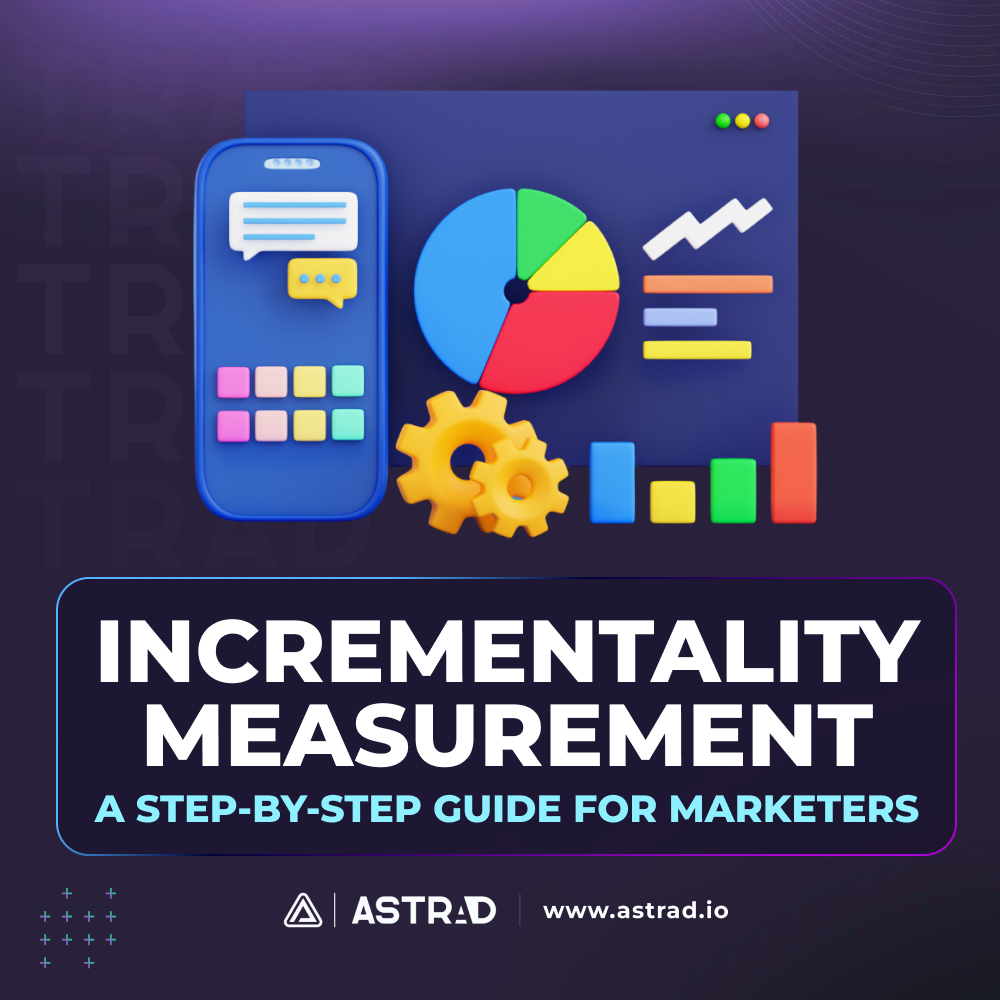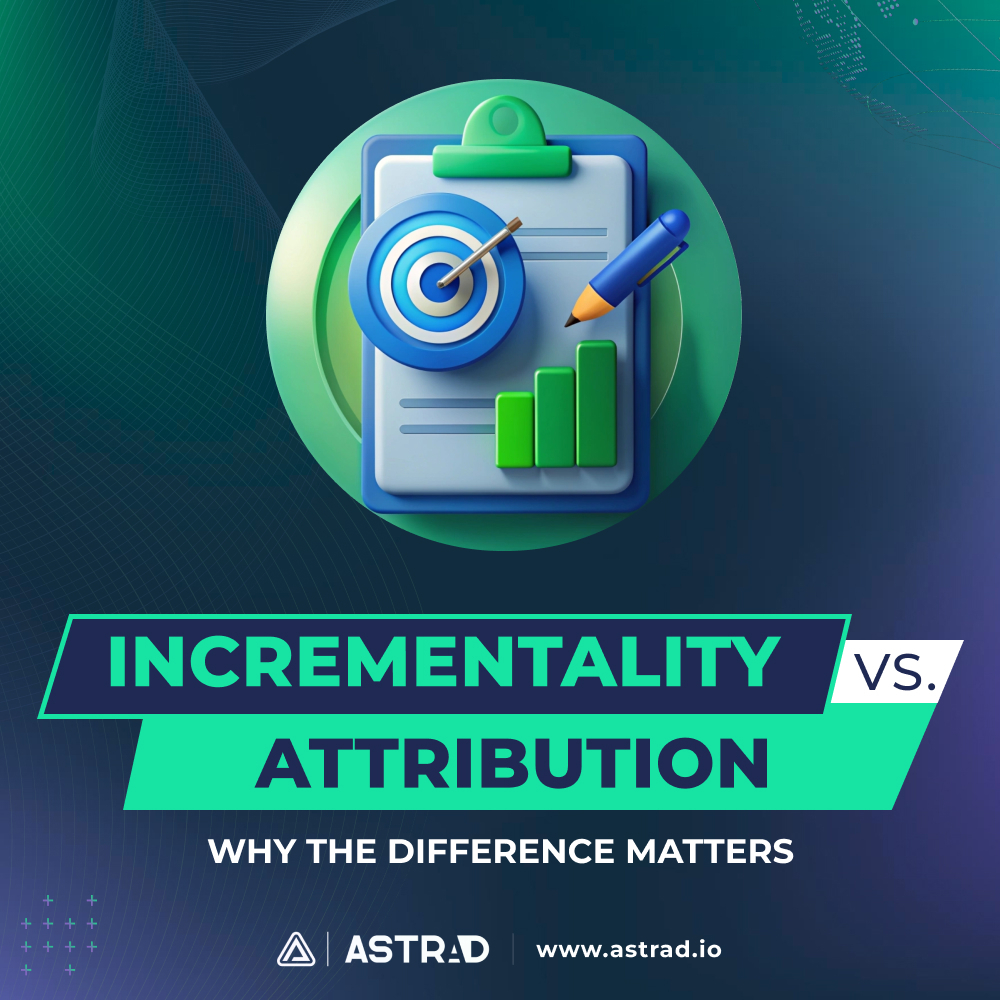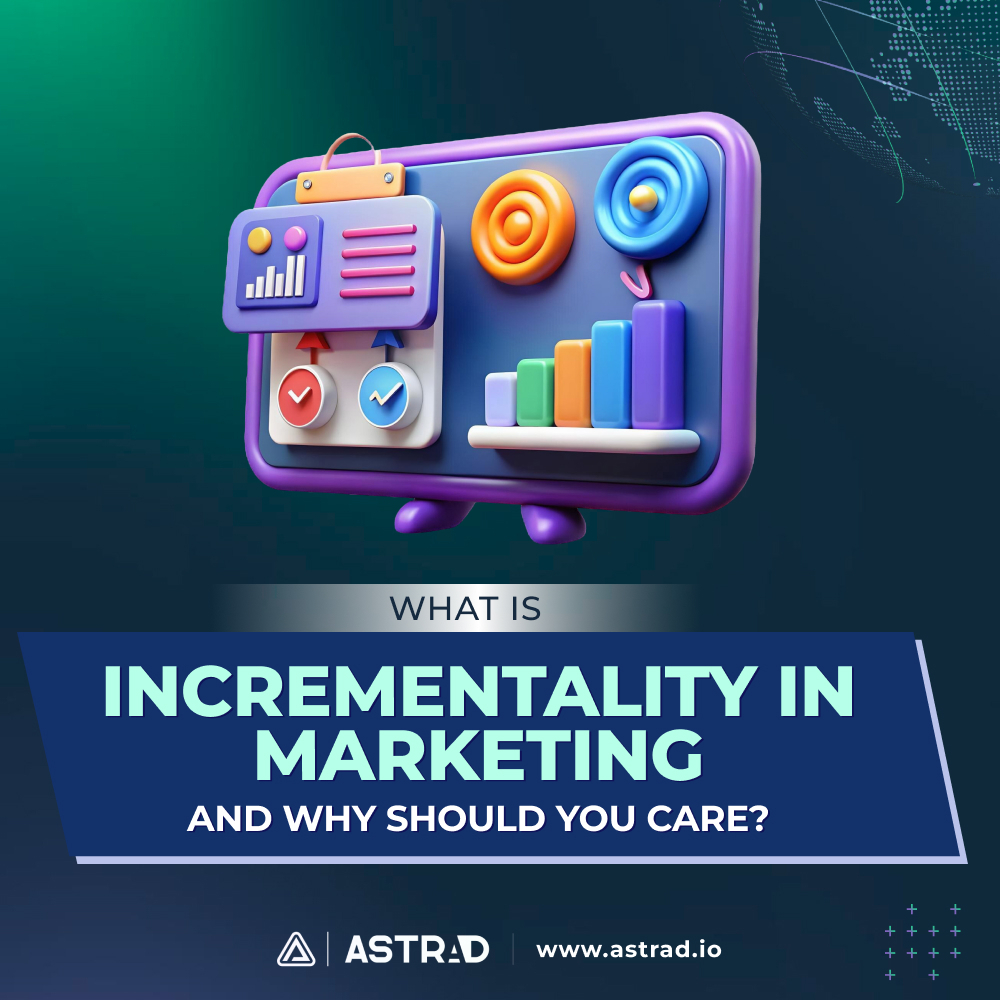Your marketing numbers might look great — clicks are up, conversions are rolling in — but here’s the catch: those numbers could be misleading.
You might be spending big bucks on campaigns that seem successful but aren’t actually bringing in new customers. The conversions you’re celebrating? They might’ve happened anyway, even without the ad spend. The clicks? Probably coming from people already planning to buy.
This is why incrementality in marketing is so important. It shows you the true impact of your marketing efforts — the actual difference your campaigns are making. Traditional metrics tell you what happened, but incrementality shows you what happened because of your marketing.
Think of it like this: if someone was already going to buy your product and then sees your ad, does that ad really deserve credit? Incrementality digs deeper and answers that question.
The Real Deal: Incrementality vs Your Usual Marketing Metrics
Most marketing teams live and breathe metrics like impressions, clicks, and conversions. These numbers are super easy to track and make you feel like things are happening, but they’re missing something huge – whether your marketing actually caused those results.
What Is Incrementality in Marketing
So, what exactly is incrementality in marketing? It’s basically the extra impact your marketing creates on top of what would have happened naturally without any marketing at all. Think of it as the real difference your marketing makes.
Here’s how this works in the real world: let’s say 100 people were going to buy your product this month, no matter what. Then you run an ad campaign and end up with 150 total sales. Your incremental impact? That’s 50 sales, not 150. Those 50 extra customers are the only ones you can actually take credit for.
This stuff becomes really important when you think about how many people are already looking to buy what you’re selling. They might click your ad and buy something, but they were going to make that purchase anyway. Your ad just happened to be there when they did it.
Traditional Metrics vs Marketing Incrementality
The difference between regular metrics and incrementality is like the difference between “this happened after that” and “this happened because of that.” Your usual metrics show you correlation – when you run ads, people convert. But that doesn’t prove your ads actually caused those conversions.
- Impressions and Clicks: These tell you how many people saw and clicked your ads, but they don’t tell you if those clicks led to new business or just captured people who were already planning to buy.
- Attribution-Based Conversions: Regular conversion tracking gives you credit for sales because someone clicked your ad before buying. But it doesn’t account for people who would have bought anyway.
- Return on Ad Spend (ROAS): ROAS shows you the revenue per dollar spent, but it often counts sales that would have happened without your ads, making your campaigns look more effective than they really are.
Getting to the Real Impact
Incrementality is all about figuring out the actual impact of your marketing by comparing what happens with your campaigns versus what happens without them. You need to create situations where you can measure the difference between people who saw your marketing and people who didn’t.
The big question you’re trying to answer is: “What extra business happened specifically because of this marketing?” This helps you tell the difference between taking credit for sales that were going to happen anyway and actually creating new opportunities.
How Does Incrementality in Marketing Work?
Measuring incrementality means setting up tests that actually isolate what your marketing does. The best way to do this is to create controlled situations where you can compare results between people who saw your marketing and people who didn’t.
Test and Control Groups: The Basic Setup
The heart of incrementality testing is splitting your audience into two groups that are basically identical. One group gets your marketing (the test group), and the other group either sees nothing or gets some neutral message like a public service announcement (the control group).
Both groups need to be as similar as possible – same demographics, same behaviors, same everything that might affect whether they’ll buy from you. The bigger these groups are, the better, because larger groups give you more reliable results.
Here’s where it gets interesting: you compare what happens with both groups. If the group that saw your marketing does significantly better, that difference is what your marketing actually accomplished.
Ways to Actually Measure This Stuff
There are a few different ways to test incrementality, and each one works better for different situations.
- A/B Testing: You create two versions of something and randomly show them to different people. But for incrementality, instead of testing “Version A vs Version B,” you’re testing “Campaign vs No Campaign” or “Campaign vs Neutral Message.”
- Lift Analysis: This is where you measure the actual lift by comparing your test and control groups. So if your test group converts at 3% and your control group converts at 2%, you’ve got a one percentage point lift, which is actually a 50% improvement.
- Geographic Testing: Also called geo-testing, this is where you use different cities or regions as your test and control groups. You might run your campaign in some cities but not others, then compare what happens in each place.
Attribution Models: What Gets Credit?
Attribution models are about deciding which marketing touchpoints get credit for a sale, but you need to look at them through an incrementality lens to really understand what’s going on.
- First-Touch Attribution: This gives all the credit to the first time someone interacted with your marketing. It’s useful for understanding how people first discover you, but it doesn’t tell you if that first interaction actually influenced their decision to buy.
- Last-Touch Attribution: This gives credit to the last thing someone clicked before buying. It’s simple and popular, but it often makes your bottom-funnel stuff look way more important than it really is.
- Multi-Touch Attribution: These models spread the credit around to multiple touchpoints. They give you a more complete picture of the customer path, but they still don’t answer whether any of those touchpoints actually changed someone’s behavior.
The trick is using attribution data alongside incrementality testing to understand not just what people interacted with, but what actually influenced them to do something they wouldn’t have done otherwise.
Why You Should Actually Care About This
Understanding incrementality changes everything about how you think about marketing. Nearly 40% of digital ad spend is questioned for its true impact, which means a lot of marketing budgets are basically being wasted on stuff that doesn’t actually work.
Getting Real About ROI
Regular ROAS calculations often include money that would have come in anyway, even without your marketing. Incremental ROAS (iROAS) gives you the real picture by only counting revenue that your marketing actually created.
This can be a real eye-opener. A campaign that looks like it has a 5x ROAS might only have a 2x iROAS when you account for people who would have bought anyway. Understanding this difference helps you put money into things that actually create value instead of just capturing people who were already going to buy.
Companies that focus on incremental returns often find out they can get the same results with way less spending by cutting campaigns that aren’t really doing anything.
Making Your Marketing Strategy Actually Work
Incrementality shows you which marketing activities actually drive growth versus those that just move existing demand around. This helps you make way smarter decisions about where to spend your time and money.
For example, you might find out that your retargeting campaigns have awesome conversion rates but terrible incrementality because they’re mostly reaching people who were already planning to buy. Meanwhile, your awareness campaigns might have lower immediate conversion rates but generate tons of incremental value by bringing in completely new customers.
These insights help you balance the pressure for immediate results with building actual long-term growth.
Spending Your Budget Where It Actually Matters
One of the best things about incrementality measurement is figuring out how to split your budget across different channels and campaigns. When you know which activities give you the highest incremental return, you can systematically move money toward the stuff that actually works.
This often reveals some pretty surprising things. Channels that look amazing based on regular metrics might show almost no incrementality, while channels that seem to underperform might actually be driving significant value that wasn’t getting proper credit.
The result? A much more efficient marketing mix that maximizes the actual impact of your budget instead of optimizing for vanity metrics that don’t really connect to business growth.
Ways to Actually Measure Incrementality
Getting incrementality measurement up and running means picking the right approach for your specific situation. Different methods work better for different types of campaigns and what your team can actually handle.
Geographic Testing for Big Picture Insights
Geographic testing means using different locations as your test and control groups to see what your marketing actually does. This works really well if you’re a business that operates in lots of different places and can run location-based campaigns.
Here’s how it works: you pick markets that are basically the same and run your marketing in some but not others. Then you compare what happens in each place to figure out your incremental impact.
This method is great for:
- Testing if TV advertising actually works
- Seeing if local promotions are worth it
- Understanding whether spending more money in certain markets pays off
- Trying out new marketing channels before going big
Audience Holdout Testing
This is where you take a chunk of your target audience and don’t show them any marketing while everyone else gets the full treatment. The trick is making sure both groups are randomly picked and basically identical in terms of anything that might affect their behavior.
Holdout testing gives you pretty direct measurement of what your marketing actually does, but you need to be careful that your test and control groups don’t somehow influence each other. It works best when you can clearly define who you’re targeting and keep the groups separate.
Marketing Mix Modeling for Strategic Planning
Marketing Mix Modeling (MMM) uses statistical analysis of your past data to figure out what impact different marketing activities had on your business. It’s not real-time testing, but it gives you valuable insights into how much each part of your marketing actually contributed.
MMM can help you understand:
- When each marketing channel stops being as effective (diminishing returns)
- How different marketing activities work together and influence each other
- The best way to split your budget across channels for maximum impact
- How much business you’d get even without any marketing
This approach is especially useful for big-picture planning and understanding how all your marketing works together.
Getting Started with Incrementality
Implementing incrementality measurement doesn’t have to be overwhelming. Start with clear goals and gradually build your testing as you go.
Focus on your biggest marketing investments and see if they’re truly driving incremental impact. Look at campaigns like branded search or retargeting, where non-incremental activity might be high.
The goal isn’t to eliminate non-incremental marketing — some of it has its place, like customer service or staying competitive. Instead, understand the role each activity plays so you can fine-tune your strategy.
The key is to use your insights to move your budget towards high-impact activities, optimize campaigns, and focus on creating real value. When incrementality becomes central to your marketing, you’ll have the clarity you need to make smarter, more confident budget decisions.





